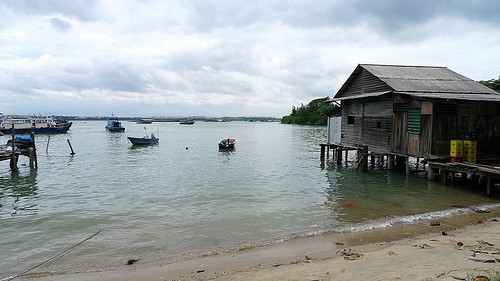I thought Korean beer was bad, but Chinese beer is at a whole other level for me. While the taste is not too far off from the likes of Cass and Hite in Korea, the percentage of alcohol appears to be the problem.
One of my very first posts was on alcohol and beer taxation in Singapore. I came across some studies that revealed the higher alcohol percentage (ABV) liquor or beer is, the more heavily it’s taxed. While most beers in Singapore didn’t drop below 4.0% ABV, the opposite appears to be the case in China. Tsingtao, probably the most well known Chinese company, sells beer that ranges (wildly) from 2.1% to 4.0% alcohol, depending on the bottle type. Small, amber colored grenade looking bottles are often under 3.0%, but I’ve also come across large 500ml bottles that range from 2.3-3.6%. It’s mind-boggling.

After some sleuthing on Google, and asking questions on the nerdiest of beer message boards, I came across some possible explanations of why Chinese beers are so low in alcohol.
One possible explanation is that Chinese beer may not measured in Alcohol By Volume, but rather in Alcohol by Weight. Using an ABV-ABW calculator, 3.6% ABW becomes around 4.5%ABV, not much different than an American macrobrew.
However, the Chinese characters on the bottles for alcohol read 酒精含量, or “alcohol content,” and does not specify weight or volume.
One member simply said Chinese drinking culture doesn’t place beer very highly, which from my personal experiences is somewhat true. Wine is likely the most consumed Western beverage as it is more of a status symbol to its drinkers. Beer is a relatively new product for Chinese people to consume, supposedly.
As a result, I’ve found myself more willing to purchase an Erdinger or Duvel at a much higher cost at a bar, mostly because it has a much more consistent alcohol content. I love beer and its taste, but I also care about its ABV (see my homebrews for example). The alcohol content in a beer can greatly contribute to the taste of a beer, even if it is mass-produced lager.
All is not lost though. As mentioned in a previous blogpost, The Boxing Cat Brewery is a good outlet for my quality beer drinking at decent prices. The microbrewery, which makes an excellent India Pale Ale, is much more consistent to tastes. But with the extremely humid summers of Shanghai, I think a cold low-ABV Chinese beer may also do the trick.
Some people have said that I should get back into homebrewing in China. I’m very open to the idea, but there’s a lot equipment to buy that I think doesn’t really exist here. Some horror stories have led me to believe that getting packages shipped from the States would only result in the parcels getting lost at a China Post distribution center. I imagine it would especially be the case with a heavy package containing hops and malts. But, we’ll see. It took me several months in Korea before I got into the homebrewing, but now that I (somewhat) know what I’m doing, I’m sure the start-up wouldn’t be as bad.



